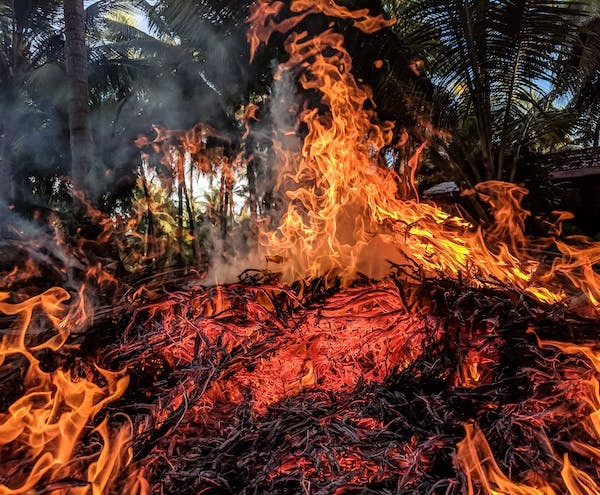One would probably think that smoking cigarettes is the main source of secondhand smoke. However, experts have revealed that the wildfires happening in Canada is also similar to acquiring secondhand smoke.

In an entry posted on Medical Xpress, Rutgers University researchers have studied the impact of the Canada wildfires towards the United States, saying that it gives negative effects to the air quality, specifically in the northeastern region.
"The wildfires in Canada gave us a sobering demonstration of the climate change impacts on air quality," Memo Cedeño Laurent, Assistant Professor at the Rutgers School of Public Health, said in the Medical Xpress report.
Researchers said that the level of the pollution seen this year was not observed since smoking was banned indoors in 2006.
Studies found out that the average levels of pollution measured in New Jersey and New York on June 7 had reached nearly ten times the maximum level of the federal standards' measurement of what is safe for people to consume over 24 hours.
Meanwhile, New York City was considered as the world's most polluted city on that day.
Worse than car emissions
A report posted on Air Quality News stated that the smokes coming from wildfire could actually be more threatening than car emissions.
Experts explained that the initial smoke reacts with the air and the sun, which will later lead to alterations in chemical composition.
This was the same conclusion last year made by the researchers from Georgia, led by Associate Professor Rawad Saleh. They noted that as smoke goes up in the atmosphere, the fumes' chemical composition will be altered because of the evident exposure to the sun.
As the smoke heats up in the air, it will collect toxins that could endanger one's health, according to a CBS News report.
In Canada alone, the fumes emanating from the wildfires in forests and grasslands could be a major source of air pollution.
In the website of the Government of Canada, it is said that the wildfire smokes, which usually happen from early April to late October, is expected to continue as the country continues to warm in a faster pace compared to the rest of the world.
Experts are expected to continue studying the chemicals that made up the smoke so that they will know how can these make people ill.
What should people do during wildfire smoke encounters
The Centers for Disease Control and Prevention (CDC) explained the components of wildfire smoke which includes a mixture of gases and fine particles that can bring illnesses to the public.
The CDC has warned that people with asthma, chronic obstructive pulmonary disease (COPD), heart disease, those who are pregnant, children and responders are mostly at risk when they inhale these wildfire smokes.
Furthermore, the CDC said that when one inhales smoke, they can cause immediate effects, such as coughing, breathing troubles, wheezing, asthma attacks, stinging eyes, scratchy throat, runny nose and irritated sinuses, headaches, tired feeling, chest pain and fast heartbeat.
The CDC gave some tips on what to whenever there are wildfire smokes. The agency said that one should always try to keep the smoke outside of their houses' premises.
- Use fans and air conditioning in order to maintain a cool temperature.
- Make available a portable air cleaner or a filter in order to keep the air inside the room clean even if it is smoky across the rest of the building and outdoors.
- Keep the windows and doors closed. Choose a room where you can close off from outside air.
- When inside a vehicle, set the air to recirculate.
- Wear N95 face masks or respirator masks for protection from the smokes.
Related Article : Canada Wildfire Smoke Clearing Up Along US East Coast, Extreme Heat Danger an Emerging Threat: Meteorologists
© 2025 NatureWorldNews.com All rights reserved. Do not reproduce without permission.





